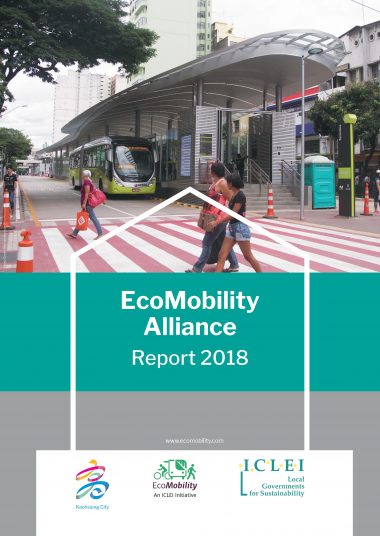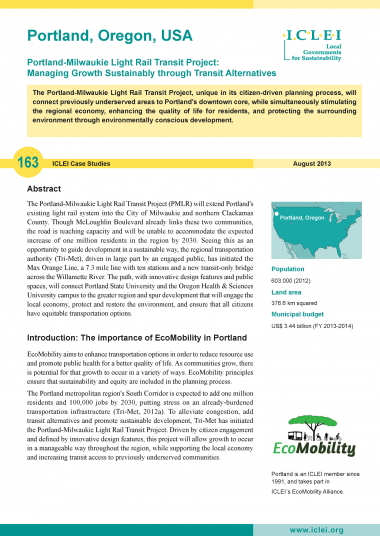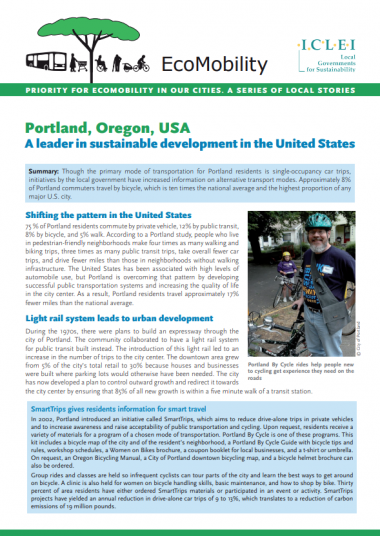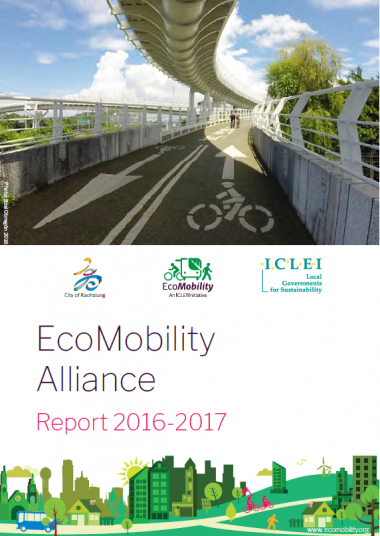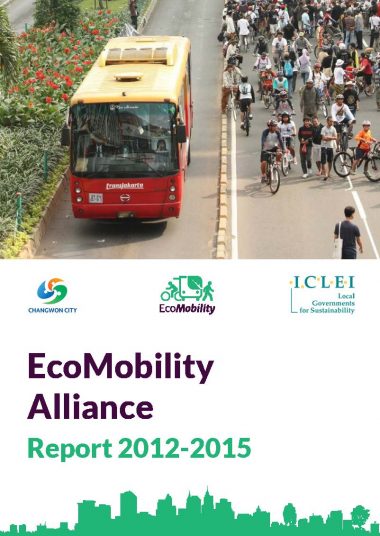Portland, a harbor city, is an excellent example of how a city could proactively approach AVs by focusing on the fundamentals of sustainable mobility and livable city planning. Many exciting things happened in 2018. Portland maintains the Comprehensive Plan 2035 and the Transportation System Plan 2035 that took effect in May 2018. Both plans work together to guide the transportation policies and investments in Portland to achieve the Vision Zero goal (i.e. zero fatalities), help transit and freight vehicles move reliably and affordably, and to create great places for its residents.
Portland’s transportation hierarchy for moving people
Portland focuses on moving people in the most ecomobile manner, i.e. prioritizing walking, cycling, transit and use of shared vehicles. If individual transport is needed, then ZEVs are preferred. This transportation hierarchy forms the basis of all transport development in Portland regardless of new technologies like AVs. The goal is to move people in the most efficient, effective and safe manner. One of the biggest pushes in 2018 has been the update to the Pedestrian Master Plan 1998 (PedPDX), which is slated to complete in early 2019. PedPDX will include a prioritization framework that will be updated regularly to identify projects for funding, a toolbox of action that will enhance the pedestrian experience and performance measurements to track progress. In addition, Portland is conducting a citywide Americans with Disabilities Act (ADA) Transition Plan, which includes strategies for barrier removal and reviews of rules and regulations.
Portland will be releasing the Portland Protected Bikeway Design Guide to help planners to ensure that protected bikeways have a standard design that is easily understandable by people biking, walking, and driving. In 2018 alone, Portland has built more than 16km of new bikeways, most of which are protected or barred. Additionally, the Central City in Motion plan was just adopted to add 50km of low-stress bikeways and other pedestrian and transit projects in the central city.
The Livable Streets Strategy 2017 prioritizes the use of the right-of-way for community gathering spaces and placemaking. The Portland in the Streets Community Grant Program supports community-driven projects focused on transportation safety, equity, innovation, and placemaking.
Portland’s approach to Connected and Automated Vehicles (CAV)
Portland’s Automated Vehicles Policy was adopted in May 2018 as part of the Transportation System Plan 2018 as the city recognizes that AVs will inevitably enter the city. Therefore, the city is taking the proactive stance to work with companies interested in AV testing in Portland and with community members to ensure safe and equitable trial. The goal is to “prioritize connected and automated vehicles that are part of a fleet/shared ownership.” If AVs should enter the city, AVs need to advance the Vision Zero goal and demonstrate that travel time reliability and system efficiency will be improved.
To safeguard Portland’s overarching transportation goal, Portland has the following strategies around AVs:
- Require sharing of anonymized transportation data such as vehicle type, travel routes, occupancy, travel times, etc. while ensuring that CAVs use city’s rights-of-way
- Design and manage the mobility zone, called the Curb Zone, to increase safety and limit speed, and prioritize CAVs carrying more passengers in congested times and locations
- Evaluate the public cost and benefit before investing in AV infrastructure through a criteria- driven plan
- Develop sustainable user-payment funding mechanisms
- Ensure that CAVs connect to the city’s smart infrastructure and pay for the infrastructure and service investments according to the vehicle impacts to the transportation system.
Portland sets the example of how a city could “get AVs right” by establishing strong fundamentals in the transportation system. Even as this disruptive technology enters the city, Portland ensures that it will improve access for all, smooth traffic congestion, improve commuter comfort and decrease road fatalities.
